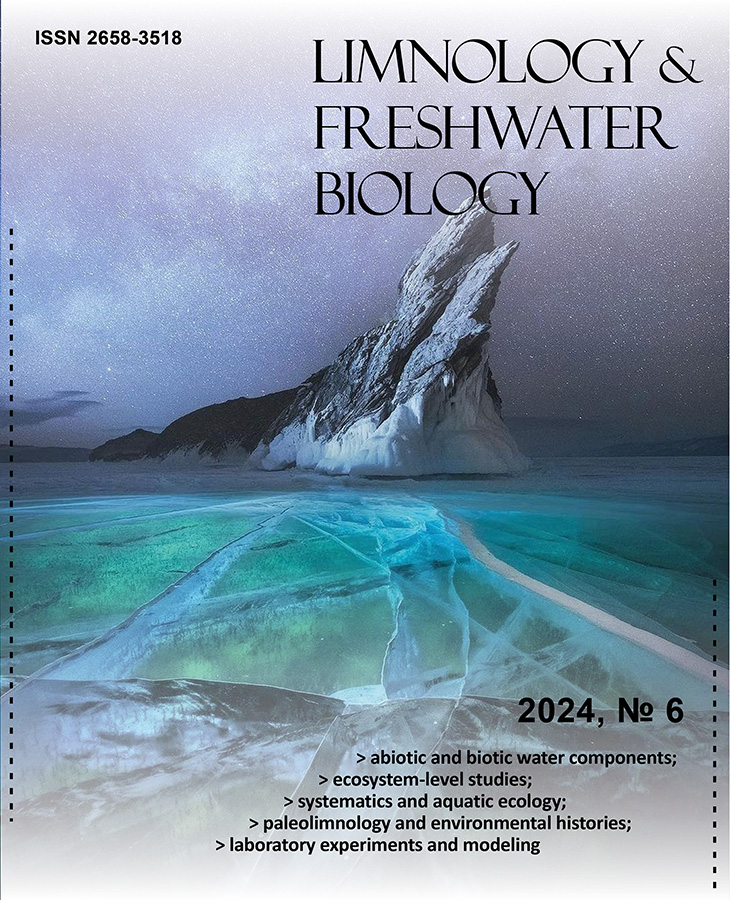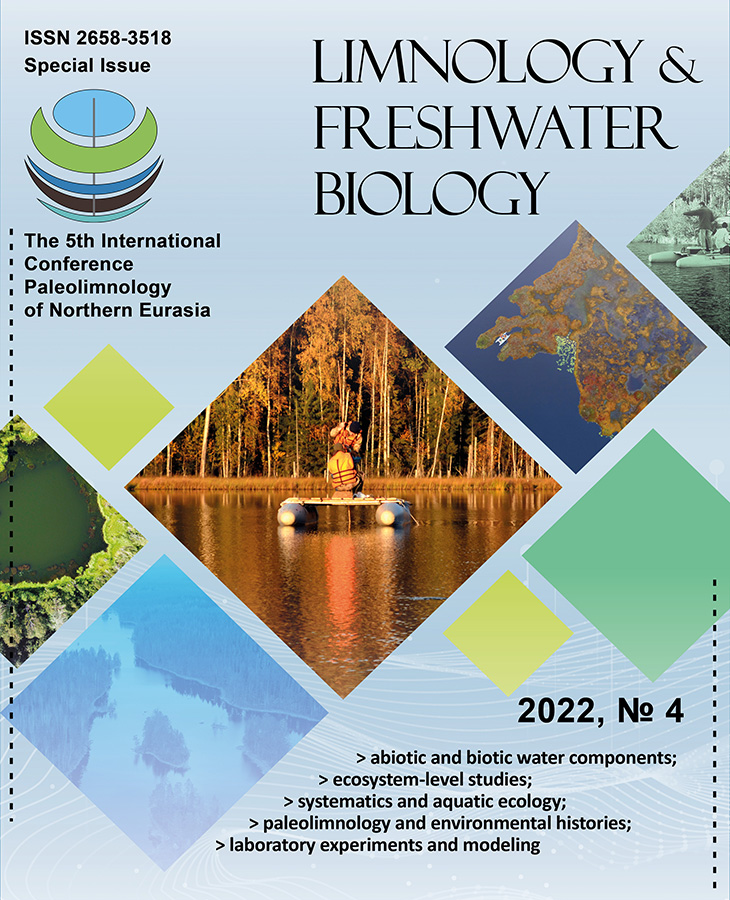Giant Late Pleistocene paleolake in Central Kamchatka depression (Kamchatka Peninsula, Russian Far East)
- Авторы: Zelenin E.A.1, Ponomareva V.V.2, Fedorov G.B.3,4, Gurinov A.L.5,6, Zakharov A.L.5, Dirksen O.V.2, Mukhametshina E.O.5, Portnyagin M.V.7
-
Учреждения:
- Geological Institute of the Russian Academy of Sciences
- Institute of Volcanology and Seismology
- Arctic and Antarctic Research Institute
- Saint Petersburg State University
- Institute of Geography of the Russian Academy of Sciences
- Рeoples Friendship University of Russia
- GEOMAR Helmholtz Centre for Ocean Research Kiel
- Выпуск: № 4 (2022)
- Страницы: 1623-1624
- Раздел: Статьи
- URL: https://journal-vniispk.ru/2658-3518/article/view/288379
- DOI: https://doi.org/10.31951/2658-3518-2022-A-4-1623
- ID: 288379
Цитировать
Полный текст
Аннотация
A number of tephrochronologically correlated and dated sedimentary sections provide evidence for the existence of a giant lake filled the Central Kamchatka depression 30-11 thousand years ago. The lake extent bounded by CKD borders is estimated to be ~10 000 km2. This estimate makes this lake comparable in size to the famous Late Pleistocene glacial Lake Missoula.
Ключевые слова
Полный текст
Introduction
The evolution of Kamchatka landscapes remains poorly known even for the Late Pleistocene. Our recent tephrochronological studies based on the geochemical fingerprinting of volcanic glass particles and AMS 14C dating of host deposits provided a chronological lattice for the last 30 ka (Ponomareva et al., 2021). Dated lacustrine sediments revealed a period of simultaneous lacustrine deposition across the vast areas of the Central Kamchatka depression (CKD) that, together with fluvial topography pattern, indicates the existence of previously unknown giant lake within the CKD (Fig. 1).
Fig. 1. Studied sections (labelled white circles), and suggested extent of the CKD lake basin (blue outline in the figure and blue shade in the inset). Modern glaciers are shown in turquoise, Holocene volcanic deposits including debris fans are in light brown. Red lines are active faults.
Materials and methods
In recent years, we have examined a large number of outcrops of lacustrine sediments in the CKD. The sediments were sampled for grainsize, diatom, and pollen analyzes, tephra samples were collected for geochemical analysis. AMS 14C measurements were conducted by Beta Analytic Inc. (Miami) on the organic fraction of bulk lacustrine sediments consisting primarily of pollen, spores, and organic fossils. These dates permitted a Bayesian age-depth modelling for the KamPlen key section following the approach of Blaauw and Christen (2011) with subsequent Bayesian modelling of the composite section (Fig. 2) in OxCal software (Bronk Ramsey, 2009). The geomorphologic setting of the studied sections was determined using the SRTM 1 arc-second and ArcticDEM digital elevation models supported by satellite imagery and UAV survey. Spatial data of the project as well as previously published maps and schemes have been collected in a geographic information system (GIS).
Fig. 2. Tephrochronological age model of the mega-lake key sections (Ponomareva et al., 2021). Labels denote major marker tephra layers (bold) and site specific tephra IDs. Tephras are colour-coded according to their composition.
Results and discussion
All the studied sites are located below 160 m a.s.l., at heights 10-155 m above the CKD drain. There are no recent topographic barriers in most of the CKD, and the Last Glacial Maximum in Kamchatka is estimated to be no more than piedmont glaciers (Melekestsev et al., 1974). Therefore, the lake extent bounded by the CKD topography is estimated to be ~10 000 km2. The age of studied deposits is 11-30 ka, whereas most of the sections are tied together by tephras in the time range between 19.3 ka (ZR-1) and 29.9 ka (Geys30).
Tens of thousands of years is a sufficient period for significant tectonic transformations of the topography. The eastern CKD border is the most active fault zone in Kamchatka with estimated horizontal slip rate of 13.3 mm/yr (Kozhurin and Zelenin, 2017). However, the listric main plane of this fault zone hampers accurate estimation of vertical displacement and its spatial distribution within the CKD. Accounting for these deformations, the CKD floor was partially higher in the past, so that the maximum lake depth was lower than the present-day estimate of ~ 155 m.
The timing of the onset and drain of the Late Pleistocene lake indicates that climatic factor played a leading role in its evolution. However, tectonic deformations have been strongly affecting the topography of the CKD throughout the studied times, so that CKD drainage to Pacific Ocean prior the LGM was probably directed off the present-day drainage.
Conclusions
A number of tephrochronologically correlated and dated sedimentary sections provide evidence for the existence of a giant lake filled the Central Kamchatka depression in the Late Pleistocene, 30-11 thousand years ago. The lake extent bounded by CKD borders is estimated to be ~10 000 km2. This preliminary size estimate makes this lake comparable in size to the famous Late Pleistocene glacial Lake Missoula. The reconstruction the lake emergence, evolution and drain requires an integrative study of the Late Pleistocene glaciation, volcanic accumulation and tectonic deformations.
Acknowledgements
This research is supported by the ongoing Russian Science Foundation grant No. 21-77-10102.
Conflict of interest
The authors declare no conflict of interest.
Об авторах
E. A. Zelenin
Geological Institute of the Russian Academy of Sciences
Автор, ответственный за переписку.
Email: egor.zelenin@ginras.ru
Россия, 7, Pyzhevsky Lane, Moscow, 119017
V. V. Ponomareva
Institute of Volcanology and Seismology
Email: egor.zelenin@ginras.ru
Россия, 9, Piip Blvd., Petropavlovsk-Kamchatsky, 683006
G. B. Fedorov
Arctic and Antarctic Research Institute; Saint Petersburg State University
Email: egor.zelenin@ginras.ru
Россия, 38, Bering St., Saint Petersburg, 199397; 7-9, Universitetskaya Emb., Saint Petersburg, 199034
A. L. Gurinov
Institute of Geography of the Russian Academy of Sciences; Рeoples Friendship University of Russia
Email: egor.zelenin@ginras.ru
Россия, 29, Staromonetny Lane, Moscow, 119017; 6, Miklukho-Maklay St., Moscow, 117198
A. L. Zakharov
Institute of Geography of the Russian Academy of Sciences
Email: egor.zelenin@ginras.ru
Россия, 29, Staromonetny Lane, Moscow, 119017
O. V. Dirksen
Institute of Volcanology and Seismology
Email: egor.zelenin@ginras.ru
Россия, 9, Piip Blvd., Petropavlovsk-Kamchatsky, 683006
E. O. Mukhametshina
Institute of Geography of the Russian Academy of Sciences
Email: egor.zelenin@ginras.ru
Россия, 29, Staromonetny Lane, Moscow, 119017
M. V. Portnyagin
GEOMAR Helmholtz Centre for Ocean Research Kiel
Email: egor.zelenin@ginras.ru
Германия, 1-3, Wischhofstrasse, Kiel, 24148
Список литературы
- Blaauw M., Christen J.A. 2011. Flexible paleoclimate age-depth models using an autoregressive gamma process. Bayesian Analysis 6: 457-474. doi: 10.1214/11-BA618
- Bronk Ramsey C. 2009. Bayesian analysis of radiocarbon dates. Radiocarbon 51: 337-360. doi: 10.1017/s0033822200033865
- Kozhurin A., Zelenin E. 2017. An extending island arc: the case of Kamchatka. Tectonophysics 706: 91-102. doi: 10.1016/j.tecto.2017.04.001
- Melekestsev I.V., Braitseva O.A., Erlich E.N. et al. 1974. Volcanic mountains and plains. In: Luchitsky I.V. (Ed.), Kamchatka, Kurilʹskiye i Komandorskiye ostrova [Kamchatka, Kurile and Commander Islands]. Moscow: Nauka, pp. 162-234. (in Russian)
- Ponomareva V., Pendea I.F., Zelenin E. et al. 2021. The first continuous late Pleistocene tephra record from Kamchatka Peninsula (NW Pacific) and its volcanological and paleogeographic implications. Quaternary Science Reviews 257: 106838. doi: 10.1016/j.quascirev.2021.106838
Дополнительные файлы












